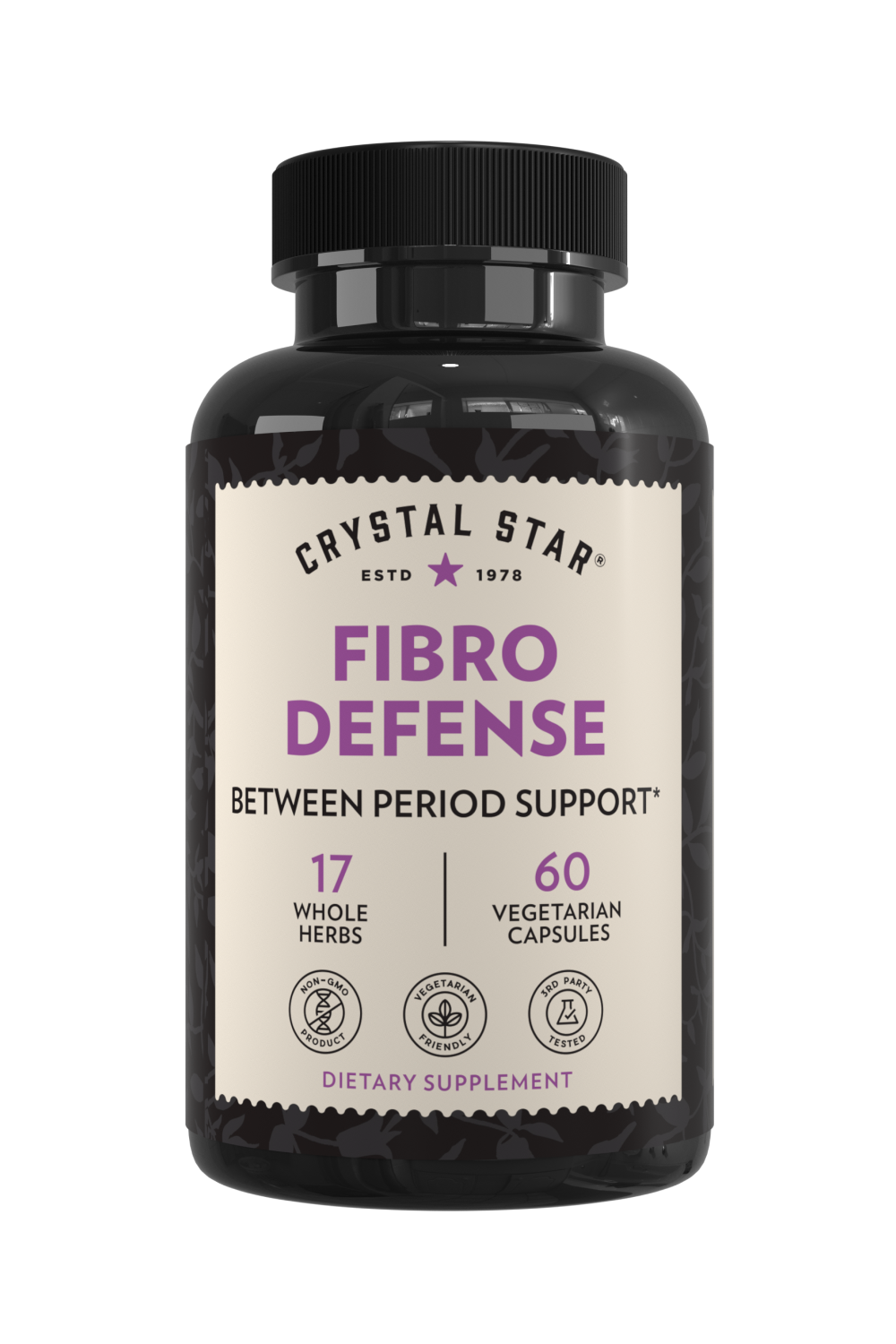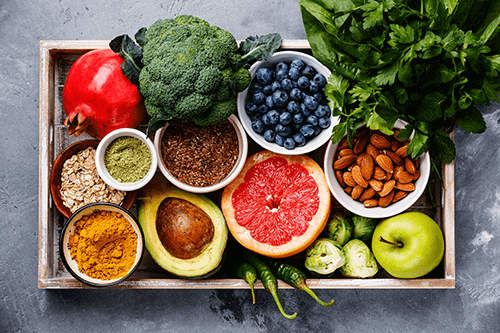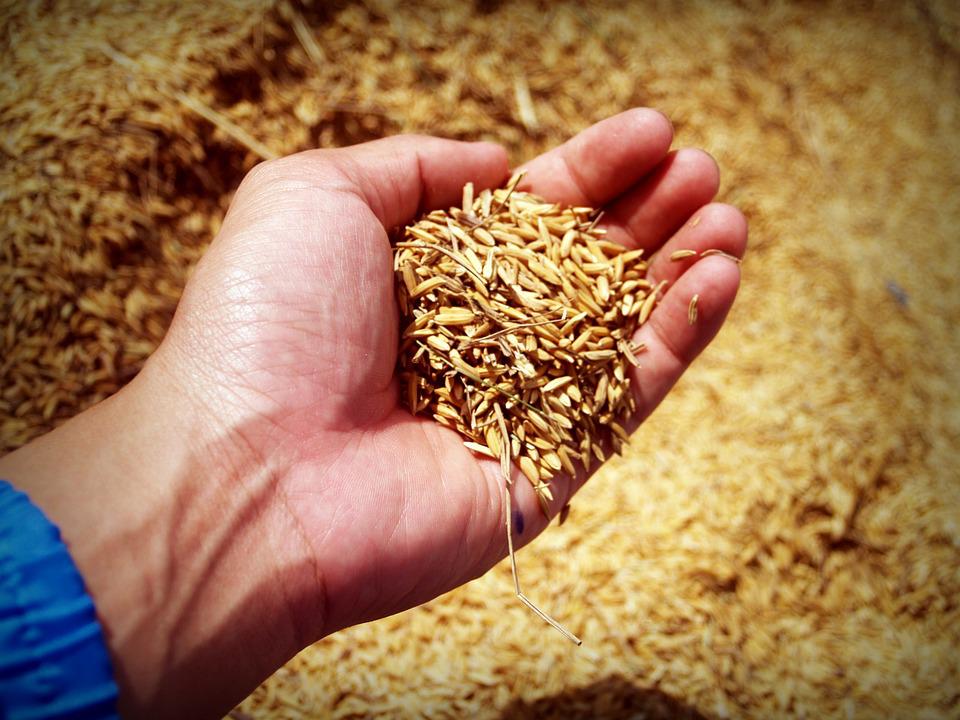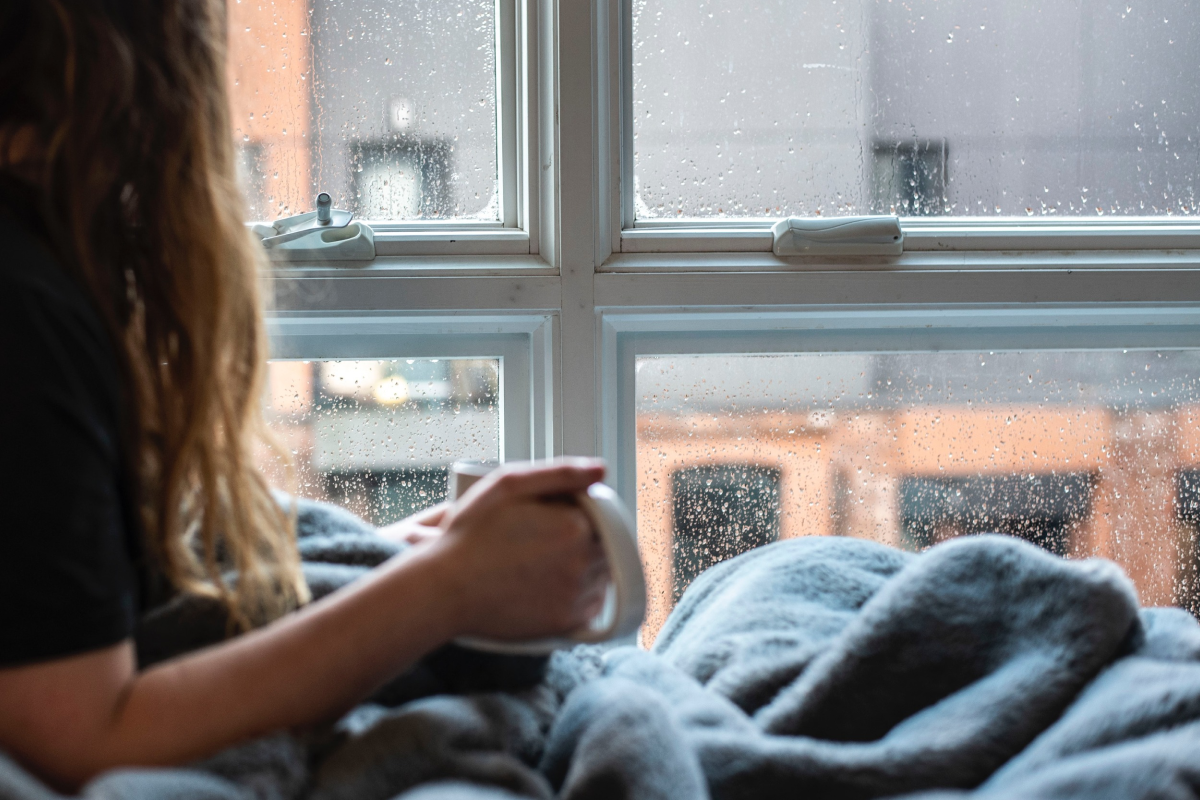
Mar 20, 2020
10 mins read
NAD can boost cell health. What does that mean for aging?
Our cells are the building blocks of our bodies. Cell health is vital for the overall health of our bodies. In this article, I’ll explain the relationship between cellular health and aging, how you can decrease your risk for age-related disease, and three things you can do to increase the activity of a special family of enzymes that has been associated with longevity.
 Nicotinamide adenine dinucleotide (NAD) is a molecule that plays critical roles in ATP production, DNA repair, immune system functions, the breaking down of glucose and fatty acids, and many other cellular processes.[1]
Nicotinamide adenine dinucleotide (NAD) is a molecule that plays critical roles in ATP production, DNA repair, immune system functions, the breaking down of glucose and fatty acids, and many other cellular processes.[1]
 Sirtuins play important roles in human metabolic health. SIRT1 activity may improve heart function. It also protects against metabolic concerns.[2] This includes obesity and metabolic syndrome, which is a cluster of conditions that increase our risk for heart disease, stroke, and diabetes. SIRT1 also protects against ischemia-reperfusion injury. Ischemia-reperfusion injury is a state where tissue within the body is damaged when blood supply returns to the area after a period of low oxygen. This can occur when blood flow returns to an organ, such as the heart, lungs, kidneys, gut, skeletal muscle, or brain, after a heart attack, or when blood flow returns to the brain after a stroke. The symptoms of ischemia-reperfusion injury depend on which organs are affected. SIRT1 activity is also protective against cardiomyopathy. Cardiomyopathy is a disease of the heart muscle that a person either is born with or develops later in life. And finally, SIRT1 activity also protects against vascular endothelial dysfunction. Vascular endothelial dysfunction is a malfunctioning of the normal processes of an important group of cells that make up the lining of our blood vessels. These processes include promoting dilation of the blood vessels and preventing clotting of the blood, inflammation, and thickening of the vessels. Vascular endothelial dysfunction is a response to risk factors such as diabetes, hypertension, smoking, high cholesterol, and obesity.[3] It contributes to atherosclerosis or plaque build-up in the blood vessels. Like SIRT1, SIRT3 protects against ischemia-reperfusion injury. It also protects against high cholesterol.[4]
Sirtuins play important roles in human metabolic health. SIRT1 activity may improve heart function. It also protects against metabolic concerns.[2] This includes obesity and metabolic syndrome, which is a cluster of conditions that increase our risk for heart disease, stroke, and diabetes. SIRT1 also protects against ischemia-reperfusion injury. Ischemia-reperfusion injury is a state where tissue within the body is damaged when blood supply returns to the area after a period of low oxygen. This can occur when blood flow returns to an organ, such as the heart, lungs, kidneys, gut, skeletal muscle, or brain, after a heart attack, or when blood flow returns to the brain after a stroke. The symptoms of ischemia-reperfusion injury depend on which organs are affected. SIRT1 activity is also protective against cardiomyopathy. Cardiomyopathy is a disease of the heart muscle that a person either is born with or develops later in life. And finally, SIRT1 activity also protects against vascular endothelial dysfunction. Vascular endothelial dysfunction is a malfunctioning of the normal processes of an important group of cells that make up the lining of our blood vessels. These processes include promoting dilation of the blood vessels and preventing clotting of the blood, inflammation, and thickening of the vessels. Vascular endothelial dysfunction is a response to risk factors such as diabetes, hypertension, smoking, high cholesterol, and obesity.[3] It contributes to atherosclerosis or plaque build-up in the blood vessels. Like SIRT1, SIRT3 protects against ischemia-reperfusion injury. It also protects against high cholesterol.[4]
 Now that we’ve discussed the wonderful benefits of NAD and the fact that our levels do decline with age, you’re probably wondering how to support optimal levels. One way to do this is through oral supplementation. If you’re interested in supplementation to support optimal NAD levels, there are a few things that you need to know. First of all, a good NAD supplement won’t actually contain NAD, it will contain NAD precursors. That’s because research shows that ingesting NAD+ or NADH molecules directly won't increase plasma or tissue levels of NAD.[13] But research does show that oral supplementation with NAD precursors such as niacinamide (NAM) and nicotinamide riboside (NR) increase NAD+ levels within the body. [14] [15] [16] [17] [18] In fact, nicotinamide riboside is broken down into niacinamide within the body before it continues through the salvage pathway and is converted to NAD+.[19] Both niacinamide and nicotinamide riboside eventually break down into nicotinamide mononucleotide in the body and are converted into NAD through the salvage pathway.[20] But as far as these precursors are concerned, niacinamide has a unique effect on sirtuins. When you supplement with niacinamide, it initially decreases sirtuin activity for a short period of time. The niacinamide is then rapidly converted to NAD. When the niacinamide is converted, the result is a significant increase in sirtuin activity.[21] This is how niacinamide in particular stimulates sirtuin activity and may support optimal lifespan and healthspan.
Now that we’ve discussed the wonderful benefits of NAD and the fact that our levels do decline with age, you’re probably wondering how to support optimal levels. One way to do this is through oral supplementation. If you’re interested in supplementation to support optimal NAD levels, there are a few things that you need to know. First of all, a good NAD supplement won’t actually contain NAD, it will contain NAD precursors. That’s because research shows that ingesting NAD+ or NADH molecules directly won't increase plasma or tissue levels of NAD.[13] But research does show that oral supplementation with NAD precursors such as niacinamide (NAM) and nicotinamide riboside (NR) increase NAD+ levels within the body. [14] [15] [16] [17] [18] In fact, nicotinamide riboside is broken down into niacinamide within the body before it continues through the salvage pathway and is converted to NAD+.[19] Both niacinamide and nicotinamide riboside eventually break down into nicotinamide mononucleotide in the body and are converted into NAD through the salvage pathway.[20] But as far as these precursors are concerned, niacinamide has a unique effect on sirtuins. When you supplement with niacinamide, it initially decreases sirtuin activity for a short period of time. The niacinamide is then rapidly converted to NAD. When the niacinamide is converted, the result is a significant increase in sirtuin activity.[21] This is how niacinamide in particular stimulates sirtuin activity and may support optimal lifespan and healthspan.
 Here are three ways that you can promote cell viability and support optimal cellular function:
Here are three ways that you can promote cell viability and support optimal cellular function:
 Resveratrol, a compound that is naturally found in grapes, has been demonstrated to activate SIRT1. Because of its effect on SIRT1, resveratrol may be beneficial in preventing or treating obesity, preventing the formation of cancer cells, and decreasing the age-related decline of heart function and brain and nerve cell loss.[23]
Resveratrol, a compound that is naturally found in grapes, has been demonstrated to activate SIRT1. Because of its effect on SIRT1, resveratrol may be beneficial in preventing or treating obesity, preventing the formation of cancer cells, and decreasing the age-related decline of heart function and brain and nerve cell loss.[23]
Dr. Janelle Louis is a licensed naturopathic doctor who specializes in helping people with childhood trauma overcome the chronic health concerns they are at increased risk for developing, including mental health conditions, reproductive concerns, autoimmune diseases, and metabolic syndrome. Dr. Louis is committed to ensuring that her patients live their healthiest lives in the present in spite of their difficult pasts. Resources: [1] https://www.ncbi.nlm.nih.gov/pmc/articles/PMC6277084/ [2] https://www.ahajournals.org/doi/10.1161/CIRCRESAHA.118.312498 [3] https://www.ncbi.nlm.nih.gov/pmc/articles/PMC1993955/ [4] https://www.ahajournals.org/doi/10.1161/CIRCRESAHA.118.312498 [5] https://www.ncbi.nlm.nih.gov/pmc/articles/PMC3745303/ [6] https://www.ncbi.nlm.nih.gov/pmc/articles/PMC3370421/ [7] https://www.tandfonline.com/doi/full/10.1080/23723556.2019.1632613 [8] https://www.cell.com/cell/fulltext/S0092-8674(19)30344-7 [9] https://www.ncbi.nlm.nih.gov/pmc/articles/PMC5514996/ [10] https://www.ncbi.nlm.nih.gov/pmc/articles/PMC6511662/ [11] https://www.ncbi.nlm.nih.gov/pmc/articles/PMC5795269/ [12] https://www.ncbi.nlm.nih.gov/pmc/articles/PMC5959283/ [13] https://www.ncbi.nlm.nih.gov/pubmed/16802695 [14] https://www.ncbi.nlm.nih.gov/pubmed/28417163 [15] Xue, YQ, Increasing NAD level by D-ribose and its combinations. PCT/US2019/031889 patent pending. [16] https://www.ncbi.nlm.nih.gov/pubmed/27721479 [17] https://www.ncbi.nlm.nih.gov/pubmed/29599478 [18] https://patents.google.com/patent/US20140031299A1/en [19] https://www.nature.com/articles/ncomms12948 [20] https://jbiomedsci.biomedcentral.com/articles/10.1186/s12929-019-0527-8 [21] https://www.ncbi.nlm.nih.gov/pubmed/28417163 [22] https://www.ncbi.nlm.nih.gov/pubmed/30145851 [23] https://www.ncbi.nlm.nih.gov/pmc/articles/PMC3467333/
What is NAD?
 Nicotinamide adenine dinucleotide (NAD) is a molecule that plays critical roles in ATP production, DNA repair, immune system functions, the breaking down of glucose and fatty acids, and many other cellular processes.[1]
Nicotinamide adenine dinucleotide (NAD) is a molecule that plays critical roles in ATP production, DNA repair, immune system functions, the breaking down of glucose and fatty acids, and many other cellular processes.[1]
NAD fuels health-promoting sirtuin enzymes
In the 1990s, researchers discovered a group of enzymes called sirtuins that rely on nicotinamide adenine dinucleotide (NAD) to function properly. The enzymes in this family are numbered from one to 7 (SIRT1, SIRT2, etc.) and they play critical roles in regulating metabolism, aging, and longevity.How do sirtuins regulate metabolic health?
 Sirtuins play important roles in human metabolic health. SIRT1 activity may improve heart function. It also protects against metabolic concerns.[2] This includes obesity and metabolic syndrome, which is a cluster of conditions that increase our risk for heart disease, stroke, and diabetes. SIRT1 also protects against ischemia-reperfusion injury. Ischemia-reperfusion injury is a state where tissue within the body is damaged when blood supply returns to the area after a period of low oxygen. This can occur when blood flow returns to an organ, such as the heart, lungs, kidneys, gut, skeletal muscle, or brain, after a heart attack, or when blood flow returns to the brain after a stroke. The symptoms of ischemia-reperfusion injury depend on which organs are affected. SIRT1 activity is also protective against cardiomyopathy. Cardiomyopathy is a disease of the heart muscle that a person either is born with or develops later in life. And finally, SIRT1 activity also protects against vascular endothelial dysfunction. Vascular endothelial dysfunction is a malfunctioning of the normal processes of an important group of cells that make up the lining of our blood vessels. These processes include promoting dilation of the blood vessels and preventing clotting of the blood, inflammation, and thickening of the vessels. Vascular endothelial dysfunction is a response to risk factors such as diabetes, hypertension, smoking, high cholesterol, and obesity.[3] It contributes to atherosclerosis or plaque build-up in the blood vessels. Like SIRT1, SIRT3 protects against ischemia-reperfusion injury. It also protects against high cholesterol.[4]
Sirtuins play important roles in human metabolic health. SIRT1 activity may improve heart function. It also protects against metabolic concerns.[2] This includes obesity and metabolic syndrome, which is a cluster of conditions that increase our risk for heart disease, stroke, and diabetes. SIRT1 also protects against ischemia-reperfusion injury. Ischemia-reperfusion injury is a state where tissue within the body is damaged when blood supply returns to the area after a period of low oxygen. This can occur when blood flow returns to an organ, such as the heart, lungs, kidneys, gut, skeletal muscle, or brain, after a heart attack, or when blood flow returns to the brain after a stroke. The symptoms of ischemia-reperfusion injury depend on which organs are affected. SIRT1 activity is also protective against cardiomyopathy. Cardiomyopathy is a disease of the heart muscle that a person either is born with or develops later in life. And finally, SIRT1 activity also protects against vascular endothelial dysfunction. Vascular endothelial dysfunction is a malfunctioning of the normal processes of an important group of cells that make up the lining of our blood vessels. These processes include promoting dilation of the blood vessels and preventing clotting of the blood, inflammation, and thickening of the vessels. Vascular endothelial dysfunction is a response to risk factors such as diabetes, hypertension, smoking, high cholesterol, and obesity.[3] It contributes to atherosclerosis or plaque build-up in the blood vessels. Like SIRT1, SIRT3 protects against ischemia-reperfusion injury. It also protects against high cholesterol.[4]
Can sirtuins protect against age-related diseases?
Sirtuin activity has been associated with increased lifespan and healthspan. While lifespan is related to how long we live, healthspan is related to our quality of life—the period of time in our lives when we are healthy and relatively disease-free. Research demonstrates that activating SIRT1 has the potential to prevent age-associated diseases and improve health in the long term.[5] This is possibly due to sirtuins’ relationship with telomere length. Telomeres are structures found at the end of our chromosomes. You may have heard of telomere length being associated with longevity. Essentially, our telomeres shorten as we age, and telomere length affects the pace of aging and the onset of age-related diseases, such as cardiovascular disease, and neurodegenerative diseases like Parkinson’s and Alzheimer’s disease.[6] This is because shortening of our telomeres leads to cell aging and deterioration, the transformation of our cells into cancer cells, and/or cell death. In essence, when our telomeres shorten, it affects our health and our lifespan. Research demonstrates that telomere length and sirtuin activity are directly related. Specifically, telomere shortening is associated with decreased sirtuin activity and when our sirtuin activity increases, the length of our telomeres tends to stabilize.[7] Additionally, SIRT6 plays a critical role in DNA repair. The enzyme has been pinpointed as being responsible for more efficient DNA repair in individuals with longer lifespans. As a result, the gene that produces this enzyme has been referred to as the “longevity gene.”[8] As we age, NAD decreases. As a result, our SIRT enzyme activity also decreases. This decrease in NAD and sirtuin activity worsens the communication between the cell’s nucleus (essentially the brain of the cell) and the mitochondria (where energy is produced in the cell). It also negatively impacts the communication between the hypothalamus in the brain and the adipose (fat) tissue. Researchers believe that disruption in these communication pathways increases our risk for age-related diseases.[9] Because our SIRT enzymes are NAD-dependent, increasing the amount of it in the body has the potential to increase the enzyme’s activity and therefore decrease the incidence of age-related disease. It may also increase longevity.How do sirtuins and NAD affect longevity?
In order to understand how sirtuins and NAD are related to healthy bodies on the cellular level, there are a few terms and concepts you need to know.1. Nicotinamide adenine dinucleotide (NAD)
NAD levels appear to regulate cell aging.[10] Lower levels of NAD have been associated with multiple chronic diseases, including metabolic concerns such as diabetes, heart disease, and fatty liver disease; neurodegenerative diseases such as Alzheimer’s and Parkinson’s disease. It’s also associated with mental health concerns such as depression.[11] NAD is the link between cell health and healthy aging. This molecule helps to keep our cells in optimal shape and helps support both lifespan and healthspan. That’s because NAD fuels sirtuin activity which is important for longevity. It also fuels another important group of enzymes called PARP that are responsible for DNA repair within our cells.2. NAD+ and NADH
You’ll see NAD referred to in three different ways—NAD, NAD+, and NADH. NAD is the generic name for all forms of nicotinamide adenine dinucleotide. In other words, it can exist in two states—as NAD+ or as NADH. NAD+ is NAD with a positive charge, while NADH has a neutral charge. To form NADH, a positively charged hydrogen atom and two electrons are added to NAD+. The positives of the NAD+ and the hydrogen atom are neutralized by the negative charges of the two electrons, creating the neutral NADH. Because of the difference in charge between NAD+ and NADH, they serve somewhat different roles within the body. While NAD+ accepts a hydrogen atom and two electrons, NADH’s role is to help with energy production by transferring a hydrogen atom and electrons. NAD+ is the most important regulator of sirtuin activity within our cells. This means that adequate NAD+ is critical for healthy cells and a healthy body.How does the body make NAD?
Your body makes NAD in three ways from a mix of different ingredients. These ingredients are called precursors:1. Converting proteins from food
The liver can create NAD from tryptophan. This is referred to as “de novo biosynthesis” of NAD because the liver makes the molecule from a simple amino acid.2. Converting nicotinic acid (niacin) from food
Your body can also make NAD from a molecule called nicotinic acid. You can get nicotinic acid from foods such as meats, peanuts, avocados, brown rice, and mushrooms. This is known as the Preiss-Handler pathway.3. Taking advantage of the salvage pathway
The third way that the body produces NAD is called the salvage pathway. The salvage pathway is how the body maintains our levels of NAD within our cells. It is the body’s primary means of making NAD. Through this pathway, the body produces NAD using niacinamide, also known as nicotinamide. Other NAD precursors, such as nicotinamide riboside (NR), nicotinamide mononucleotide (NMN), and other molecules also feed into this pathway. Each of these methods of producing NAD requires adenosine triphosphate or ATP. ATP is the energy-carrying molecule that is found in each of our cells. It is produced in the mitochondria and is essential for many body processes, including NAD production. Our bodies produce ATP by breaking down the food that we eat. D-ribose is a naturally-occurring sugar that is found in our cells. It is an essential component in ATP production.[12] In order to produce adequate amounts of NAD, we need adequate ATP, which requires adequate amounts of D-ribose.How can we support optimal NAD levels?
 Now that we’ve discussed the wonderful benefits of NAD and the fact that our levels do decline with age, you’re probably wondering how to support optimal levels. One way to do this is through oral supplementation. If you’re interested in supplementation to support optimal NAD levels, there are a few things that you need to know. First of all, a good NAD supplement won’t actually contain NAD, it will contain NAD precursors. That’s because research shows that ingesting NAD+ or NADH molecules directly won't increase plasma or tissue levels of NAD.[13] But research does show that oral supplementation with NAD precursors such as niacinamide (NAM) and nicotinamide riboside (NR) increase NAD+ levels within the body. [14] [15] [16] [17] [18] In fact, nicotinamide riboside is broken down into niacinamide within the body before it continues through the salvage pathway and is converted to NAD+.[19] Both niacinamide and nicotinamide riboside eventually break down into nicotinamide mononucleotide in the body and are converted into NAD through the salvage pathway.[20] But as far as these precursors are concerned, niacinamide has a unique effect on sirtuins. When you supplement with niacinamide, it initially decreases sirtuin activity for a short period of time. The niacinamide is then rapidly converted to NAD. When the niacinamide is converted, the result is a significant increase in sirtuin activity.[21] This is how niacinamide in particular stimulates sirtuin activity and may support optimal lifespan and healthspan.
Now that we’ve discussed the wonderful benefits of NAD and the fact that our levels do decline with age, you’re probably wondering how to support optimal levels. One way to do this is through oral supplementation. If you’re interested in supplementation to support optimal NAD levels, there are a few things that you need to know. First of all, a good NAD supplement won’t actually contain NAD, it will contain NAD precursors. That’s because research shows that ingesting NAD+ or NADH molecules directly won't increase plasma or tissue levels of NAD.[13] But research does show that oral supplementation with NAD precursors such as niacinamide (NAM) and nicotinamide riboside (NR) increase NAD+ levels within the body. [14] [15] [16] [17] [18] In fact, nicotinamide riboside is broken down into niacinamide within the body before it continues through the salvage pathway and is converted to NAD+.[19] Both niacinamide and nicotinamide riboside eventually break down into nicotinamide mononucleotide in the body and are converted into NAD through the salvage pathway.[20] But as far as these precursors are concerned, niacinamide has a unique effect on sirtuins. When you supplement with niacinamide, it initially decreases sirtuin activity for a short period of time. The niacinamide is then rapidly converted to NAD. When the niacinamide is converted, the result is a significant increase in sirtuin activity.[21] This is how niacinamide in particular stimulates sirtuin activity and may support optimal lifespan and healthspan.
3 ways to support optimal cellular health
 Here are three ways that you can promote cell viability and support optimal cellular function:
Here are three ways that you can promote cell viability and support optimal cellular function:
1. Increase curcumin intake
Curcumin is the active constituent in turmeric, a culinary spice typically used in curried dishes. Research demonstrates that curcumin increases SIRT1 activity.[22] By doing so, curcumin protects against various neurological disorders. This includes β-amyloid-induced cell death (typical in Alzheimer’s disease), cerebral ischemic damage, and stroke. For more information on the health benefits of curcumin, check out Turmeric, the humble spice with impressive health benefits.2. Increase resveratrol intake
 Resveratrol, a compound that is naturally found in grapes, has been demonstrated to activate SIRT1. Because of its effect on SIRT1, resveratrol may be beneficial in preventing or treating obesity, preventing the formation of cancer cells, and decreasing the age-related decline of heart function and brain and nerve cell loss.[23]
Resveratrol, a compound that is naturally found in grapes, has been demonstrated to activate SIRT1. Because of its effect on SIRT1, resveratrol may be beneficial in preventing or treating obesity, preventing the formation of cancer cells, and decreasing the age-related decline of heart function and brain and nerve cell loss.[23]
3. Increase NAD levels
A third way to support optimal cellular health and decrease your risk for age-related chronic disease is to increase your NAD levels. These levels decline with age, but supplementing with NAD precursors such as niacinamide and nicotinamide riboside has been shown to increase tissue and plasma levels and cellular health. This is because sirtuins are dependent upon adequate NAD levels. For that reason, even if we take curcumin or resveratrol with a goal of increasing sirtuin activity, if we don’t support optimal NAD levels, we will be unlikely to achieve optimal results. When considering your NAD-boosting options, be aware that supplementing with it directly (instead of its precursors) has not been shown to increase its levels. For that reason, avoid products that list nicotinamide adenine dinucleotide or reduced ß-Nicotinamide Adenine Dinucleotide. If your goal is to increase NAD levels and experience increased lifespan and healthspan, look for products that contain ingredients like niacinamide and nicotinamide riboside.Closing
To summarize, activation of a family of enzymes called sirtuins has been associated with both longevity and quality of life. The activity of these enzymes is dependent upon NAD levels. These levels decrease with age, and sirtuin activity decreases as well, increasing our risk for age-related health concerns. By increasing plasma and tissue NAD levels, we can potentially increase sirtuin activity and promote optimal cellular and overall health. Oral supplementation with NAD is not sufficient to do this, however; only precursors such as niacinamide and nicotinamide riboside have been demonstrated in research to increase plasma and tissue levels of NAD after taking orally. We can also increase sirtuin activity using natural compounds such as curcumin and resveratrol, but because the enzymes are dependent on NAD to function, ensuring optimal NAD levels remains an important factor in increasing lifespan and healthspan.Dr. Janelle Louis is a licensed naturopathic doctor who specializes in helping people with childhood trauma overcome the chronic health concerns they are at increased risk for developing, including mental health conditions, reproductive concerns, autoimmune diseases, and metabolic syndrome. Dr. Louis is committed to ensuring that her patients live their healthiest lives in the present in spite of their difficult pasts. Resources: [1] https://www.ncbi.nlm.nih.gov/pmc/articles/PMC6277084/ [2] https://www.ahajournals.org/doi/10.1161/CIRCRESAHA.118.312498 [3] https://www.ncbi.nlm.nih.gov/pmc/articles/PMC1993955/ [4] https://www.ahajournals.org/doi/10.1161/CIRCRESAHA.118.312498 [5] https://www.ncbi.nlm.nih.gov/pmc/articles/PMC3745303/ [6] https://www.ncbi.nlm.nih.gov/pmc/articles/PMC3370421/ [7] https://www.tandfonline.com/doi/full/10.1080/23723556.2019.1632613 [8] https://www.cell.com/cell/fulltext/S0092-8674(19)30344-7 [9] https://www.ncbi.nlm.nih.gov/pmc/articles/PMC5514996/ [10] https://www.ncbi.nlm.nih.gov/pmc/articles/PMC6511662/ [11] https://www.ncbi.nlm.nih.gov/pmc/articles/PMC5795269/ [12] https://www.ncbi.nlm.nih.gov/pmc/articles/PMC5959283/ [13] https://www.ncbi.nlm.nih.gov/pubmed/16802695 [14] https://www.ncbi.nlm.nih.gov/pubmed/28417163 [15] Xue, YQ, Increasing NAD level by D-ribose and its combinations. PCT/US2019/031889 patent pending. [16] https://www.ncbi.nlm.nih.gov/pubmed/27721479 [17] https://www.ncbi.nlm.nih.gov/pubmed/29599478 [18] https://patents.google.com/patent/US20140031299A1/en [19] https://www.nature.com/articles/ncomms12948 [20] https://jbiomedsci.biomedcentral.com/articles/10.1186/s12929-019-0527-8 [21] https://www.ncbi.nlm.nih.gov/pubmed/28417163 [22] https://www.ncbi.nlm.nih.gov/pubmed/30145851 [23] https://www.ncbi.nlm.nih.gov/pmc/articles/PMC3467333/








